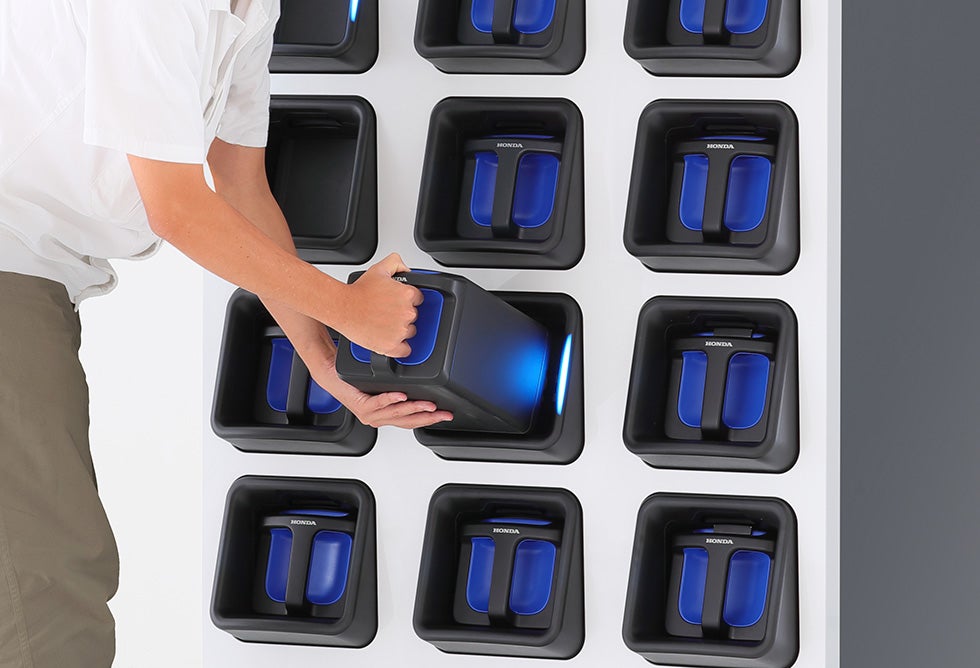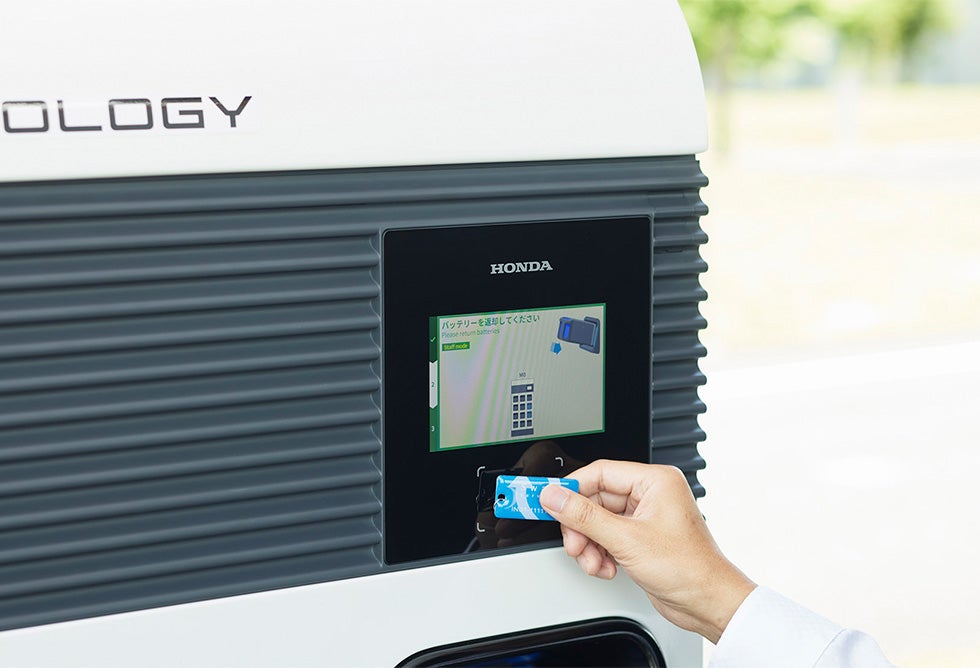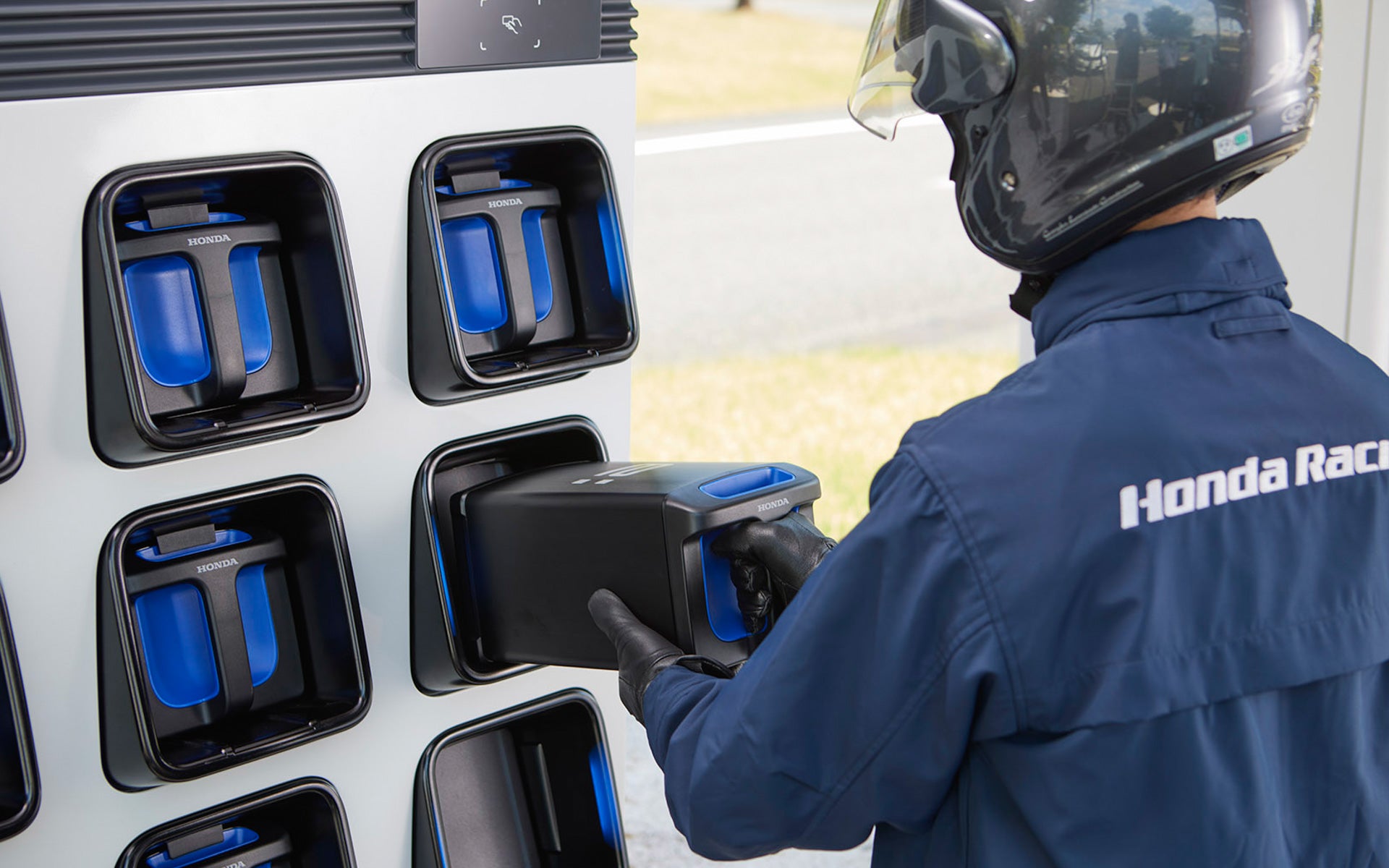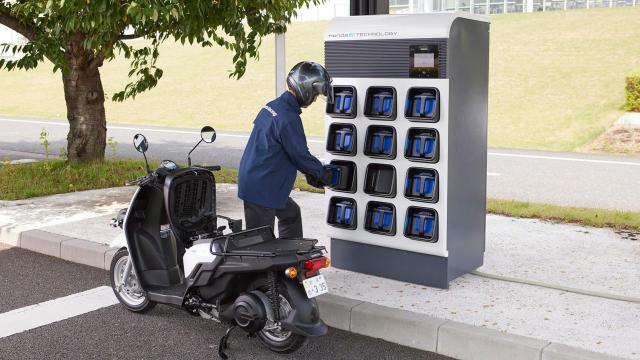Honda has installed its first EV battery exchange station in Tokyo, Japan through a partnership with battery sharing service Gachaco. The debut of the Honda Power Pack Exchanger e: in Tokyo marks the beginning of what Honda hopes will be a large network of battery swapping stations in Japan, where riders can quickly and easily exchange their EV motorcycle’s depleted batteries.
The concept of a battery swapping station was hardly pioneered by Honda, however, as the Verge reports. Taiwanese scooter company Gogoro has been using similar technology for years, even partnering up with Hero in India to make battery exchange stations viable. The company plans to make battery swapping commonplace in one of the largest two-wheeler markets in the world.
Now that Honda is putting its resources towards the same goal, it seems like battery exchanging could become the dominant method for charging, or rather recharging, electric motorcycles. Well, at least in countries to the East.

The Honda Power Pack Exchanger e: can store and charge up to 12 batteries, but can be expanded to fit more in cities or locations where a dozen batteries wouldn’t be enough. The idea is to provide a flow of battery packs, as riders pull up and swap spent cells for fresh ones. As soon as riders deposit a battery pack into the Exchanger e:, the station automatically begins recharging the battery. Doing so will take about five hours in total, which is a long time to wait, but riders would never know it.
Honda says it’s paying close attention to the ease of use and efficiency of the battery exchange process. Electric motorcycle riders will use the system via NFC, through IC or “Smart” cards — kind of like using a metro card in any major city, or tapping a credit card to pay at a store.
The Honda Exchanger e: will authenticate the rider and use whatever settings they saved to tell them which batteries (and how many) to reach for using LED lights to make it clear. Ideally, these settings will have been saved when riders first registered to use the Power Pack Exchanger e:, but Honda says the whole process can be completed at any of the stations. That’s important for first-time users, although it might be annoying for battery swapping pros who are eager to swap batteries and go.

The Exchanger e: will even operate during power outages by drawing power away from full batteries to charge fully-depleted ones. It can also be used to power nearby homes or shops, since it features bidirectional charging. It even has a cooling system to stop heat-induced degradation of battery packs.
But I think it’s an even bigger deal that Honda’s partners for its nascent battery network include other major motorcycle makers from Japan: Yamaha, Suzuki and Kawasaki. They’ve agreed to use Honda’s Mobile Power Pack e: batteries to power upcoming electric models. Meaning that Honda’s MPP e: packs, and now this Power Pack Exchanger e:, will underpin the transition to EV motorcycles in Japan. Ah, standardization is good.
Now, standardization is going to make owning an electric motorcycle abroad easy by eliminating long charging times. We can only hope the U.S. will get the Power Pack Exchanger e: stations as the company charges headlong into its EV bike strategy.

